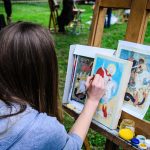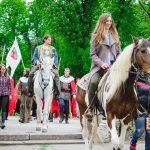XXX material Casino Garantisi | Yeni Giriş
By embracing the richness of our differences while recognizing our shared humanity, we can work towards a more harmonious coexistence. Ultimately, the study of religion invites us to engage with profound questions about existence, morality, and the nature of the divine. As we seek to understand the features of different faiths, we are reminded of the importance of empathy, respect, and open-mindedness in our interactions with others. In a world where faith continues to shape identities and communities, the journey of exploration and understanding is one that enriches our lives and deepens our connections with one another. As we move forward, let us carry with us the lessons learned from the diverse tapestry of religious traditions. Just as the sun rises each day, illuminating the world and nurturing life, water plays an equally vital role in sustaining all forms of existence on our planet.
In an era where geopolitical tensions often dominate headlines, the collaborative nature of space exploration offers a hopeful narrative of unity and shared purpose. With Earth facing challenges such as climate change, overpopulation, and resource depletion, the idea of establishing a human presence on Mars or other celestial bodies is gaining traction. Space agencies and private companies are investing in technologies that could make this a reality, from advanced life support systems to sustainable habitats.
Notably, the impact of weather on mood is not limited to just the immediate environment; it can also extend to our perceptions of time and productivity. Research has shown that people often feel more productive and focused on sunny days, while gloomy weather can lead to procrastination and a lack of motivation. This phenomenon can be particularly evident in workplace settings, where natural light and pleasant weather can enhance employee morale and productivity.
- The search for extraterrestrial life often focuses on these illuminated areas, but the mysteries of cosmic darkness may hold secrets yet to be unveiled.
- These missions will not only expand our understanding of the universe but also inspire future generations to pursue careers in science, technology, engineering, and mathematics (STEM).
- The introduction of new fabrics, such as brocade and lace, allowed for greater creativity in design.
- This balance ensures that the essence of family traditions remains intact while adapting to modern lifestyles.
- Some researchers propose that the geoglyphs were part of a ritualistic practice aimed at invoking rain, a crucial element for their survival in the arid landscape.
The holiday involves cooking a special dish made of newly harvested rice, which is offered to the sun god as a gesture of gratitude. Pongal is characterized by vibrant decorations, traditional music, and dance, showcasing Hate group the rich cultural heritage of the region. The festival not only celebrates the agricultural bounty but also reinforces community bonds as families and neighbors come together to participate in the festivities.
XXX material Para Yatırma Birimi Değiştirilir mi?
This holiday not only celebrates the achievements of the LGBTQ+ community but also serves as a reminder of the work that still needs to be done to achieve equality and acceptance. In addition to the social and political dimensions of cultural holidays, they also provide opportunities for education and awareness. For instance, Black History Month, observed in February in the United States and Canada, is a time to recognize and celebrate the contributions of Black individuals to society. Through various events, discussions, and educational programs, communities come together to honor the achievements and struggles of Black people throughout history.
Additionally, dance festivals and competitions often draw large crowds, benefiting local businesses such as hotels, restaurants, and shops. This economic aspect highlights how dance not only enriches cultural life but also serves as a vital economic driver in many communities. Uniting diverse communities through dance can also lead to greater social understanding and empathy.
Moreover, the inclusion of dance in educational curricula can enhance students’ overall learning experiences. Research has shown that engaging in dance can improve cognitive abilities, boost creativity, and enhance physical fitness. By integrating dance into academic settings, educators can create a more holistic approach to learning that addresses the diverse needs of students. This not only benefits individual learners but also contributes to the development of a more vibrant and dynamic society.
As cultures interacted, they borrowed and adapted elements from one another, leading to the emergence of new dialects and writing styles. In addition to trade, the spread of religion played a crucial role in the evolution of writing and language. The dissemination of sacred texts, such as the Bible and the Quran, necessitated the development of standardized writing systems.
- The French Revolution further transformed the fashion landscape, as the ideals of liberty and equality influenced clothing choices.
- Setting boundaries allows you to create space for self-care and reduces the likelihood of burnout.
- This breakthrough laid the groundwork for further advancements in imaging technology, including ultrasound, computed tomography (CT), and magnetic resonance imaging (MRI).
- The interplay between their divine status and the practicalities of governance, military might, and cultural patronage reveals a complex society that thrived for millennia.
- Artists often tackle themes such as racism, inequality, and environmental degradation in their work, prompting audiences to confront uncomfortable truths.
- For instance, the ancient Egyptians harnessed the annual flooding of the Nile River to create irrigation systems that transformed their agricultural practices.
This commitment to mentorship not only enriches the art form but also ensures that diverse perspectives continue to shape the future of theater. By investing in the growth of young artists, the theater community can maintain its vibrancy and relevance in an ever-evolving cultural landscape. Vicariously, the experience of theater can also serve as a powerful reminder of the importance of storytelling in our lives. Theater, as a unique form of storytelling, allows for a shared experience that can resonate deeply with audiences. This shared narrative experience can foster a sense of community and belonging, reminding us that we are all part of a larger human story.
XXX material Bonus Lisanslı Mı?
Policymakers must be informed by scientific evidence to create regulations that protect public health and the environment while promoting innovation. Initiatives that promote citizen science, where the public participates in scientific research, can foster a sense of ownership and responsibility towards scientific progress. Emerging fields such as quantum computing, biotechnology, and nanotechnology hold promise for solving some of the most pressing challenges facing humanity. Quantum computing, for instance, has the potential to revolutionize data processing and problem-solving capabilities, leading to breakthroughs in medicine, materials science, and cryptography. Similarly, advancements in biotechnology could lead to innovative solutions for sustainable agriculture, environmental remediation, and personalized healthcare.
Empathy can motivate individuals to volunteer, donate, or participate in activism, as they recognize the shared humanity in the struggles of others. Understanding the role of empathy in conflict resolution is another critical aspect of its importance. Conflicts, whether personal or societal, often arise from misunderstandings and a lack of communication. Empathy allows individuals to step into the shoes of others, gaining insight into their motivations and feelings. In many cases, simply acknowledging the emotions of others can diffuse a potentially volatile situation, leading to more amicable resolutions.
The first pharaoh, Narmer, also known as Menes, is credited with unifying Upper and Lower Egypt around 3100 BCE. This monumental achievement laid the foundation for a dynasty that would last for over three millennia, during which time the pharaohs would become synonymous with power and divinity. Building upon this foundation, the pharaohs established a complex system of governance that intertwined religion and politics. They were seen as intermediaries between the gods and the people, responsible for maintaining ma’at, the ancient Egyptian concept of truth, balance, and order.
- This sense of connection and support can be particularly beneficial for those who may feel isolated in their artistic pursuits.
- Furthermore, the accessibility of genetic research and its benefits is a critical issue that must be addressed.
- The development of materials and systems for space travel has resulted in advancements in various fields, including medicine, engineering, and environmental science.
- Another vital solution to pollution is the implementation of stricter regulations on industrial emissions and waste disposal.
- By recognizing the interconnectedness of life, we can work towards creating a more sustainable future for both humans and the natural world.
Observed from December 26th to January 1st, Kwanzaa was created in the United States in the 1960s to promote unity and cultural pride among African Americans. Each of the seven days of Kwanzaa is dedicated to one of the seven principles known as the Nguzo Saba, which include unity, self-determination, and collective work and responsibility. Kwanzaa emphasizes the importance of community, cultural identity, and the celebration of African heritage, fostering a sense of belonging and pride.
XXX material Tv Nasıl Çalışır?
In conclusion, folklore is not merely a relic of the past; it is a living, breathing aspect of culture that continues to evolve and resonate with people today. As we move forward, it is essential to recognize the importance of folklore in our lives and to actively engage with and celebrate the rich tapestry of stories that define our cultural heritage. By doing so, we ensure that the voices of our ancestors continue to echo through time, enriching our understanding of who we are and where we come from. As we embrace the future, let us commit to nurturing and preserving the folklore that binds us together, recognizing its power to inspire, educate, and unite.
When the weather is less than ideal, reaching out to friends or family for a virtual hangout or planning indoor gatherings can create a sense of community and support. Sharing experiences and feelings with others can alleviate feelings of isolation and promote a sense of belonging, regardless of the weather outside. Certain foods can have a positive impact on mental health, and being mindful of dietary choices can help individuals maintain a more stable mood throughout varying weather conditions.
Early experiments in capturing motion can be traced back to the invention of the camera obscura, a device that projected images onto a surface. However, it wasn’t until the late 1800s that inventors began to explore the possibility of recording moving images. Pioneers like Louis Le Prince and Thomas Edison played crucial roles in the development of early motion picture cameras. In 1888, Le Prince created the first moving picture film, “Roundhay Garden Scene,” which consisted of just two seconds of footage. In the United States, Thomas Edison and his assistant, William Kennedy Laurie Dickson, developed the Kinetoscope in the early 1890s.
Utilizing data and research to understand the impact of volunteering can further enhance its role in society. By collecting and analyzing data on volunteer activities, organizations can assess the effectiveness of their programs and identify areas for improvement. This evidence-based approach can help demonstrate the value of volunteering to stakeholders, including funders and policymakers. By showcasing the tangible benefits of volunteer efforts, organizations can secure support and resources to expand their initiatives and reach more individuals in need. When individuals come together to support one another, they create a ripple effect that can lead to transformative change.
Families should take the time to reflect on what traditions resonate with them and why they hold significance. This reflection can lead to a deeper appreciation for the customs that have been passed down through generations, as well as an understanding of how new traditions can enrich their family life. By being intentional about the traditions they choose to uphold, families can create a meaningful legacy that reflects their values and aspirations.
This duality illustrates that individual responses to weather can vary widely based on personal preferences and experiences. For instance, individuals living in regions with prolonged periods of gray skies and rain may be at a higher risk for developing mood disorders. This geographical aspect of weather and mood highlights the importance of considering environmental factors in mental health discussions. Interestingly, cultural perceptions of weather can also influence how individuals respond to different conditions. In some cultures, rainy weather is associated with renewal and growth, while in others, it may be viewed as a nuisance. These cultural narratives can shape our emotional responses and attitudes toward various weather conditions.
In conclusion, fear is a multifaceted emotion that plays a significant role in shaping human behavior and experiences. From its evolutionary roots to its modern manifestations, understanding the psychology of fear is essential for personal growth and well-being. Ultimately, fear can be transformed from a source of distress into a powerful catalyst for resilience, creativity, and connection. As we continue to explore the complexities of fear, it is crucial to approach it with curiosity and compassion.
This early exposure lays the foundation for language acquisition, as children gradually learn to associate sounds with meanings. The process of language development in children is a microcosm of how languages evolve over generations. Historical events, such as migrations, conquests, and trade, have played a significant role in shaping languages. For instance, the spread of the Roman Empire led to the diffusion of Latin, which eventually evolved into the Romance languages we know today, such as Spanish, French, and Italian. Similarly, the influence of the British Empire facilitated the global spread of English, resulting in various dialects and creole languages. Moreover, the interaction between different linguistic groups often leads to language contact, which can result in borrowing and blending of linguistic features.
































